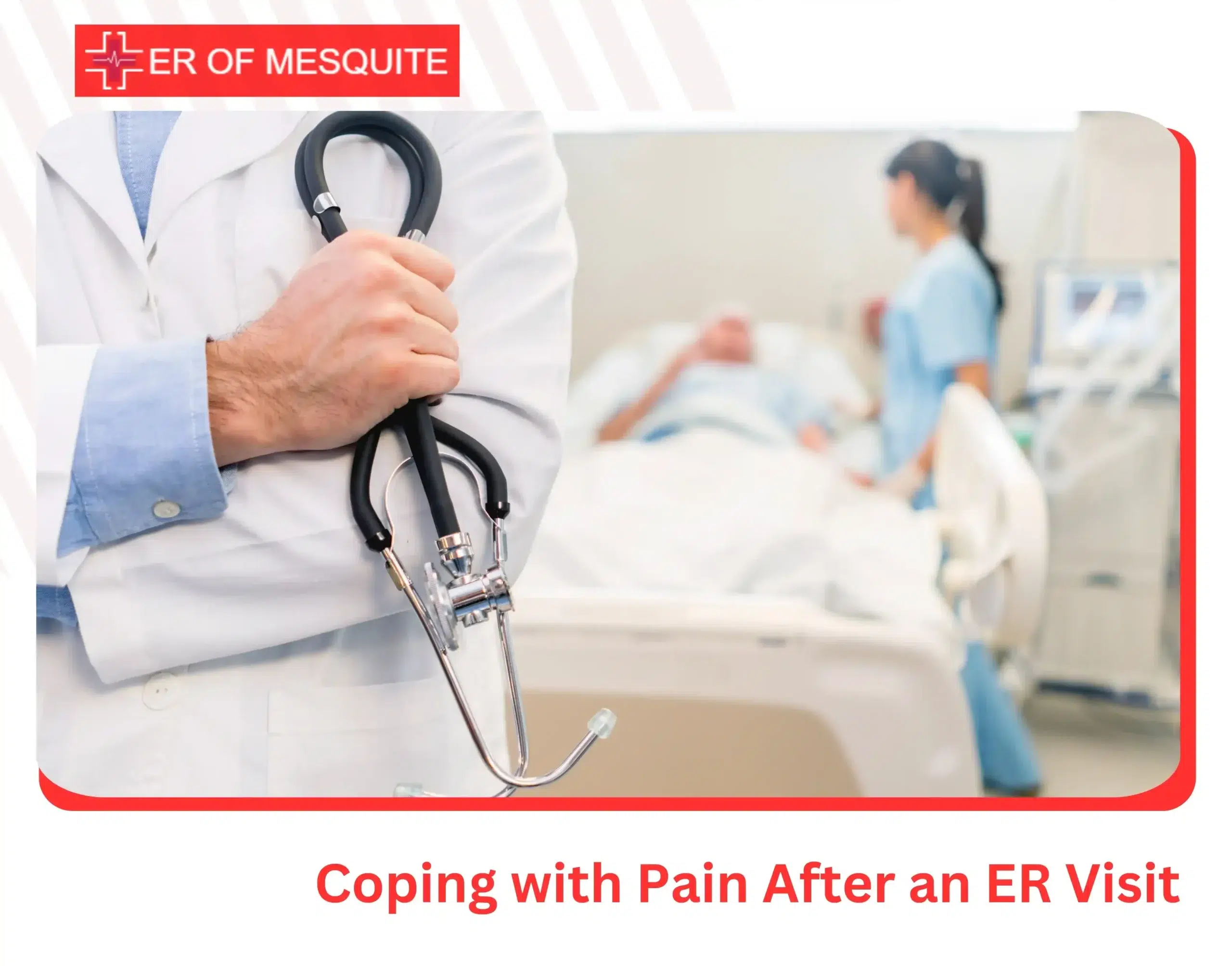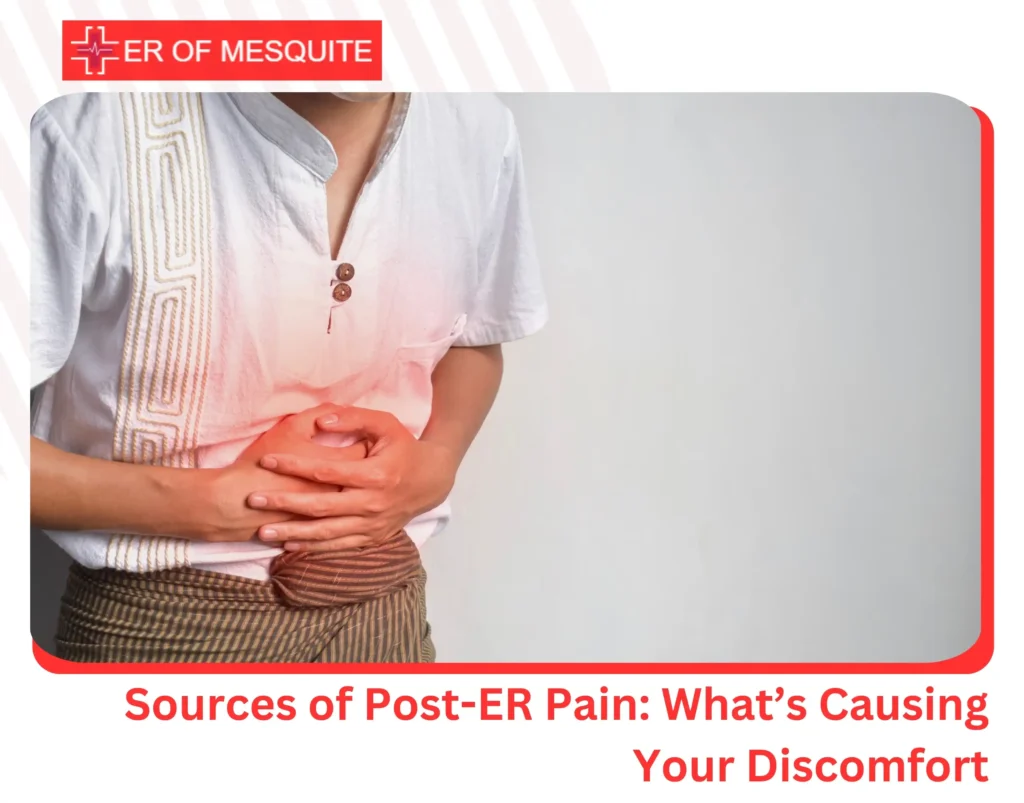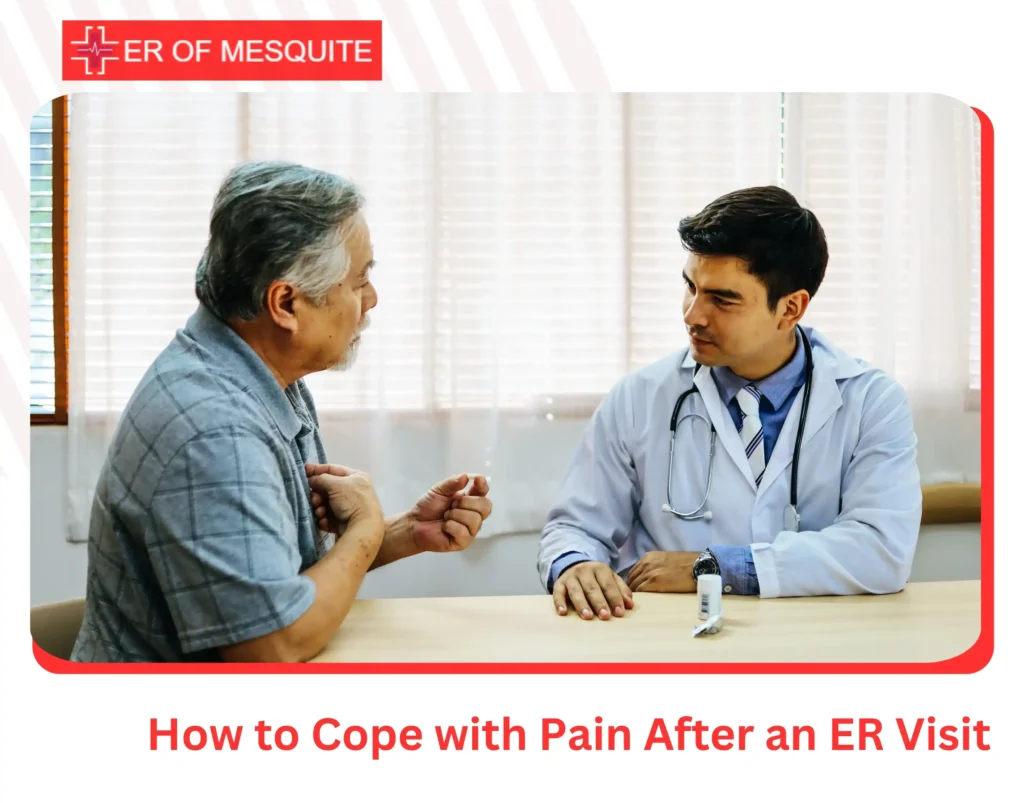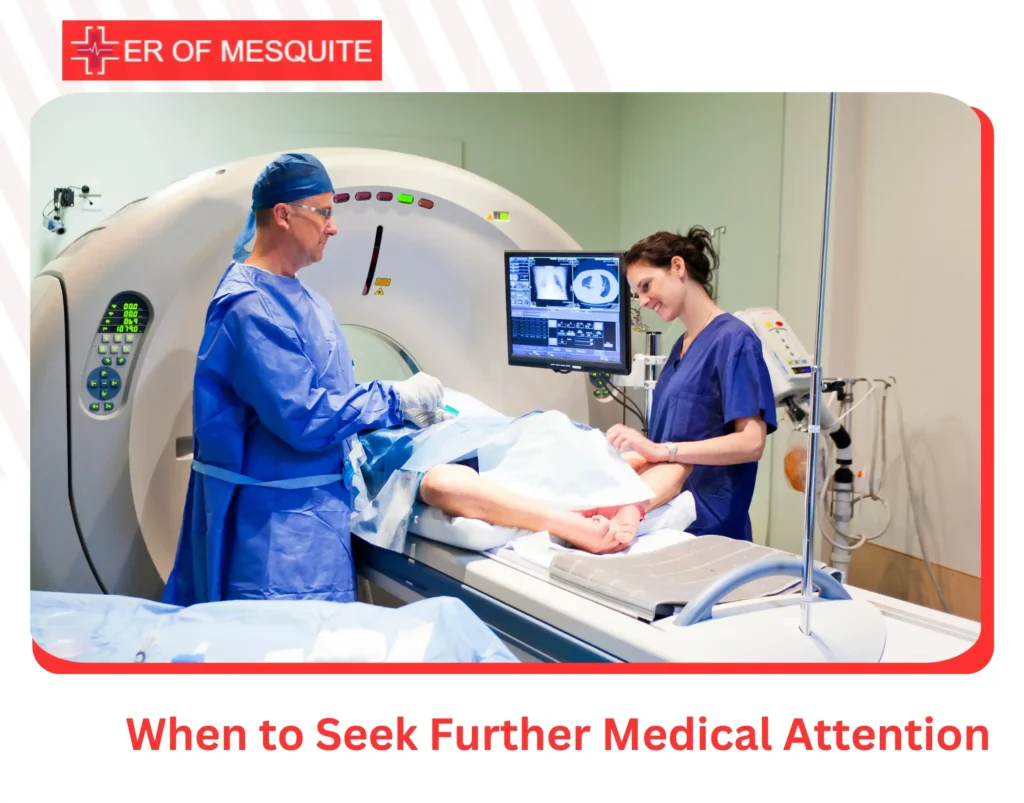You’ve made it through the chaos of the emergency room, the tests, the waiting, the uncertainty. But now that you’re back home, a new challenge begins: dealing with the lingering pain.
Whether it’s from an injury, a procedure, or the condition that brought you to the ER in the first place, managing discomfort on your own can feel overwhelming.
Let’s explore practical and supportive ways to cope with pain after ER visit, so you can focus on healing and getting back to your routine with more confidence.
Sources of Post-ER Pain: What’s Causing Your Discomfort
Pain after an emergency room visit rarely disappears the moment you walk out the door. Understanding the source of your discomfort is the first step toward managing it effectively. Most post-ER pain falls into one of these three categories:
Injury-Related Pain
Injuries such as fractures, sprains, lacerations, and burns can continue to cause pain even after treatment. Broken bones may ache for weeks, soft tissue injuries can remain tender, and burns may cause prolonged irritation as they heal. Stitches and bandaged wounds may also feel sore, especially if there is associated swelling or inflammation.
Procedure-Related Discomfort
Medical procedures performed during an ER visit may contribute to lingering discomfort. Interventions like sutures, injections, IV placements, or diagnostic tests such as lumbar punctures can cause mild to moderate soreness for hours or even days. Some diagnostic procedures involve needle insertions or pressure on sensitive areas, leading to post-procedural pain that should gradually subside.
Ongoing Symptoms from Underlying Conditions
The underlying conditions that prompted the ER visit may also result in ongoing pain. Conditions such as kidney stones, migraines, or infections can continue to cause discomfort even after initial emergency treatment. Some illnesses require time and further medical management before symptoms fully resolve, making proper pain relief strategies essential for recovery.
How to Cope with Pain After ER Visit
Managing pain effectively after leaving the ER is crucial for your recovery journey. Here are proven strategies to help you navigate this challenging transition period:
1. Follow the Discharge Instructions
Emergency doctors provide detailed discharge guidelines to assist in managing pain, supporting healing, and averting complications. These instructions typically encompass prescribed medication schedules, activity restrictions, wound care routines, and follow-up consultations. Following these guidelines ensures you take the essential steps toward recovery while minimizing unnecessary discomfort.
2. Use Pain Relievers
Pain medications play a crucial role in your recovery after an ER visit. Your emergency physician may have prescribed specific pain relievers based on your condition, which should be taken exactly as directed.
You can also try over-the-counter options like acetaminophen (Tylenol), nonsteroidal anti-inflammatory drugs (NSAIDs) to relieve pain and reduce swelling.
Always follow dosage instructions carefully for both prescription and OTC medications. Excessive use of NSAIDs can cause stomach irritation, ulcers, or kidney problems, while overuse of acetaminophen can lead to liver damage. If you are uncertain which medication to take, seek advice from your healthcare provider.
3. Apply Ice or Heat
Temperature therapy can be an effective method for managing post-ER discomfort, depending on the type of injury or situation. Applying an ice pack to an injury can assist in decreasing swelling, numbing acute pain, and limiting inflammation. Ice is particularly beneficial for conditions such as sprains, strains, or bruises.
In contrast, heat therapy can ease tight muscles, enhance circulation, and alleviate stiffness, making it helpful for muscle-related pain or chronic discomfort. Some people find relief in alternating between ice and heat therapy, especially for conditions like lower back pain. Always cover ice or heat packs with a towel before applying them to the skin to prevent burns or frostbite.
4. Elevation and Rest
For injuries that involve swelling, enhancing the affected area can help mitigate inflammation and enhance comfort. Elevation aids by allowing fluids to flow away from the injured site, reducing pressure and pain.
Pairing elevation with sufficient rest is important, as overexerting oneself or returning to regular activities too early can exacerbate the injury and prolong healing. While staying active is important, pushing through pain can lead to setbacks, so achieving a balance between rest and activity is essential.
5. Gentle Movement and Stretching
While rest is important, too much immobility can result in stiffness and increased discomfort. Engaging in gentle movement or stretching can boost circulation, prevent muscle stiffness, and promote faster recovery.
Low-impact options like short walks, light stretching, or mobility exercises may help reduce discomfort while maintaining flexibility. However, any movement should be performed carefully, and it’s essential to avoid intense activities unless cleared by your doctor. Abrupt or excessive exertion can worsen pain or lead to re-injury, so it’s important to listen to your body and progress gradually.
6. Proper Wound Care
For those who received wound care during their ER visit, maintaining a clean wound and following care instructions is important for preventing infection and minimizing pain.
Infections can greatly heighten discomfort and result in complications. Signs of infection include increased redness, warmth, swelling, pus discharge, or fever. If any of these symptoms arise, seek medical help urgently.
Keeping the wound dry, changing dressings as instructed, and avoiding unnecessary contact with the affected area can assist proper healing and lessen post-procedural pain.
7. Mind-Body Techniques for Pain Relief
Pain is not only a physical sensation but also has psychological and emotional components. Stress and anxiety can amplify the perception of pain, making it feel more intense than it actually is. Incorporating mind-body relaxation techniques can help reduce discomfort and improve overall well-being.
- Deep breathing exercises can ease muscle tension and promote relaxation, helping to reduce pain perception.
- Meditation and mindfulness techniques can shift focus away from pain and encourage a state of calm.
- Guided imagery involves visualizing a peaceful scene, which can provide a distraction from pain and promote a sense of relief.
- Massage therapy can help alleviate muscle-related pain by improving circulation and reducing tension.
Using these techniques in combination with other pain management strategies can provide a well-rounded approach to recovery.
When to Seek Further Medical Attention
While some degree of pain is expected after an ER visit, certain symptoms may indicate the need for further medical evaluation. Persistent, worsening, or unexplained pain should not be ignored. Seek medical attention if:
- Pain that intensifies instead of improving over time
- New symptoms develop, such as swelling, numbness, or severe weakness
- Prescribed or over-the-counter medications fail to provide relief
- Signs of infection re-appear, including redness, warmth, pus, or fever
- Pain becomes so severe that it interferes with daily activities or sleep
If post-ER pain becomes unmanageable or worsens unexpectedly, seek professional care immediately. ER of Mesquite provides 24/7 emergency medical services to assess and address lingering pain, complications, or emerging symptoms.
Whether your discomfort stems from an injury, a medical procedure, or an underlying condition, our experienced physicians offer prompt evaluations, advanced pain management solutions, and tailored treatment plans. If you’re unsure whether your pain requires further medical attention, don’t hesitate to visit our ER in Mesquite for comprehensive care.
FAQs
1. How do you cope with constant pain?
Managing chronic pain involves a mix of medication, physical therapy, stress reduction, and lifestyle changes to improve daily function.
2. Can you rub out nerve pain?
Massage can help relax muscles and improve circulation, but it won’t directly eliminate nerve pain at its source.
3. What stops nerve pain immediately?
Fast relief may come from cold therapy, topical anesthetics, or prescribed medications targeting nerve signals.



